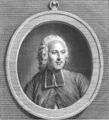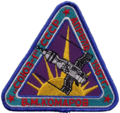Template:Selected anniversaries/April 24: Difference between revisions
No edit summary |
No edit summary |
||
| Line 16: | Line 16: | ||
||1880: Gideon Sundback, Swedish-American engineer and businessman, developed the zipper (d. 1954) | ||1880: Gideon Sundback, Swedish-American engineer and businessman, developed the zipper (d. 1954) | ||
||1885 | ||1885: American sharpshooter Annie Oakley is hired by Nate Salsbury to be a part of Buffalo Bill's Wild West. | ||
|| | ||1895: Joshua Slocum, the first person to sail single-handedly around the world, sets sail from Boston, Massachusetts aboard the sloop "Spray". | ||
|| | ||1897: Benjamin Lee Whorf born ... linguist, anthropologist, and engineer. | ||
|| | ||1899: Oscar Zariski born ... mathematician and academic. | ||
|| | ||1911: Irene Reinhild Agnes Elisabeth Sänger-Bredt born ... engineer, mathematician and physicist. She is co-credited with the design of a proposed intercontinental spaceplane/bomber Pic: https://www.sciencedirect.com/science/article/pii/S0094576504001298 | ||
||1913 | ||1913: Dieter Grau born ... scientist and engineer. | ||
File:Franck Hertz Hg tube.jpg|link=Franck–Hertz experiment (nonfiction)|1914: The [[Franck–Hertz experiment (nonfiction)|Franck–Hertz experiment]], a pillar of quantum mechanics, is presented to the German Physical Society. | File:Franck Hertz Hg tube.jpg|link=Franck–Hertz experiment (nonfiction)|1914: The [[Franck–Hertz experiment (nonfiction)|Franck–Hertz experiment]], a pillar of quantum mechanics, is presented to the German Physical Society. | ||
| Line 32: | Line 32: | ||
File:John_Fleming_in_Fleming_tube.jpg|link=John Ambrose Fleming (nonfiction)|1915: Miniaturized version of [[John Ambrose Fleming (nonfiction)|John Ambrose Fleming]] delivers lecture from within Fleming tube. | File:John_Fleming_in_Fleming_tube.jpg|link=John Ambrose Fleming (nonfiction)|1915: Miniaturized version of [[John Ambrose Fleming (nonfiction)|John Ambrose Fleming]] delivers lecture from within Fleming tube. | ||
||1919 | ||1919: David Blackwell born ... mathematician and academic. | ||
||Wolfgang Kurt Hermann "Pief" Panofsky | ||1919: Wolfgang Kurt Hermann "Pief" Panofsky born ... physicist. | ||
||1922 | ||1922: The first segment of the Imperial Wireless Chain providing wireless telegraphy between Leafield in Oxfordshire, England, and Cairo, Egypt, comes into operation. | ||
||1942: Leonid Kulik dies ... minerologist who conducted the first scientific expedition (for which records survive) to study the Tungusta meteor impact site. He began in 1927, and continued to work on the investigation until, while fighting for his country in WW II, he was captured and died of typhus in a Nazi prison camp. Pic. | ||1942: Leonid Kulik dies ... minerologist who conducted the first scientific expedition (for which records survive) to study the Tungusta meteor impact site. He began in 1927, and continued to work on the investigation until, while fighting for his country in WW II, he was captured and died of typhus in a Nazi prison camp. Pic. | ||
Revision as of 15:26, 8 November 2018
1656: Mathematician and physicist Thomas Fincke dies. He introduced the modern names of the trigonometric functions tangent and secant.
1746: Priest, physicist, and practical joker Jean-Antoine Nollet discharges a battery of Leyden jars through a human chain, unexpectedly generating gray light, although the causes of gray light (in this case, electrical stimulation of a group of mathematicians) are poorly understood at the time.
1863: Printer, inventor, and crime-fighter Édouard-Léon Scott de Martinville patents new type of phonoautograph, which records crimes against mathematical constants as photographic images.
1914: The Franck–Hertz experiment, a pillar of quantum mechanics, is presented to the German Physical Society.
1915: Miniaturized version of John Ambrose Fleming delivers lecture from within Fleming tube.
1967: Cosmonaut Vladimir Komarov dies in Soyuz 1 when its parachute fails to open. He is the first human to die during a space mission.
2016: Signed first edition of Two Creatures 2 used in high-energy literature experiment unexpectedly develops spontaneous artificial intelligence.






